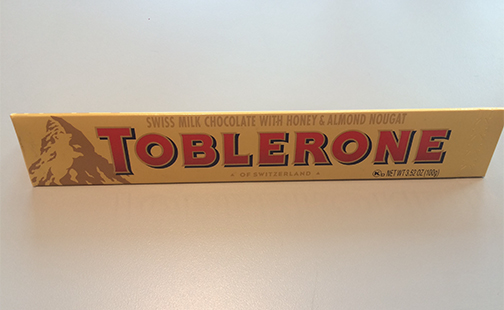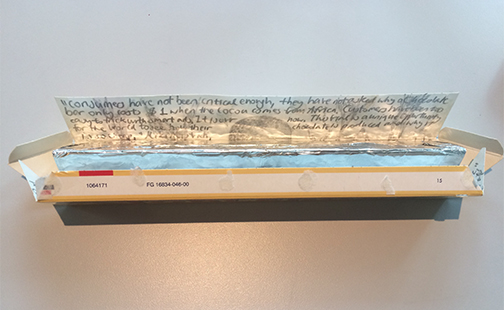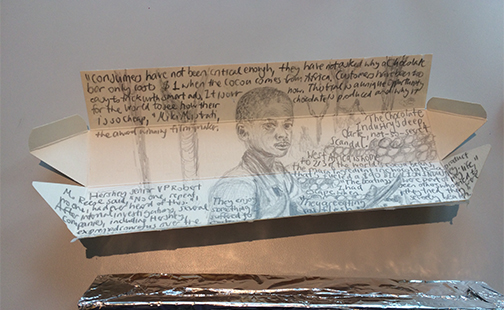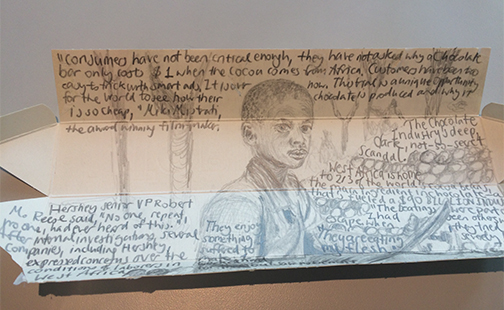Chocolate’s Deep Dark Secret
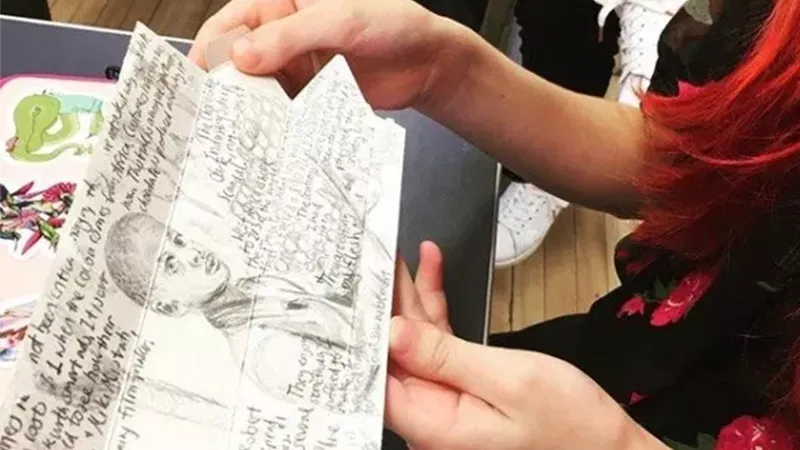
Introduction
My project is inspired by David Tartakover’s Childhood is Not Child’s Play, 1998, where he advocated against child soldier. Through this project, I am advocating against child slavery using a commercial chocolate bar to represent the issue of child slavery in the Ivory Coast in Western Africa. Since child slavery is not an extremely publicly known case within the chocolate industry, I represent it through including a drawing of child slavery in the inner cover of the paper packaging instead of the outer cover. Similar to Tartakover’s, I also included personal quotes about slavery.
According to Food Empowerment Project, Western Africa supplies over 70% of the cocoa used worldwide. Children were abducted from their villages such as Burkina Faso and Mali to be taken to cocoa farms. A former slave Aly Diabate said, “The beatings were a part of my life. I had seen others who tried to escape. When they tried, they were severely beaten,” (Food Empowerment Project). Another slave who was recently freed, Drissa, had never even tasted chocolate. He experienced similar circumstances. He said, “When people eat chocolate, they are eating my flesh,” (Food Empowerment Project).
The Project
Sources
Sources
“Child Labor and Slavery in the Chocolate Industry.” Child Labor and Slavery in the Chocolate Industry | Food Empowerment Project, Food empowerment project, www.foodispower.org/slavery-chocolate/. Accessed 14 Sept. 2017.
Haglage, Abby. “Lawsuit: Your Candy Bar Was Made By Child Slaves.” The Daily Beast, The Daily Beast Company, 30 Sept. 2015, www.thedailybeast.com/lawsuit-your-candy-bar-was-made-by-child-slaves. Accessed 14 Sept. 2017.
